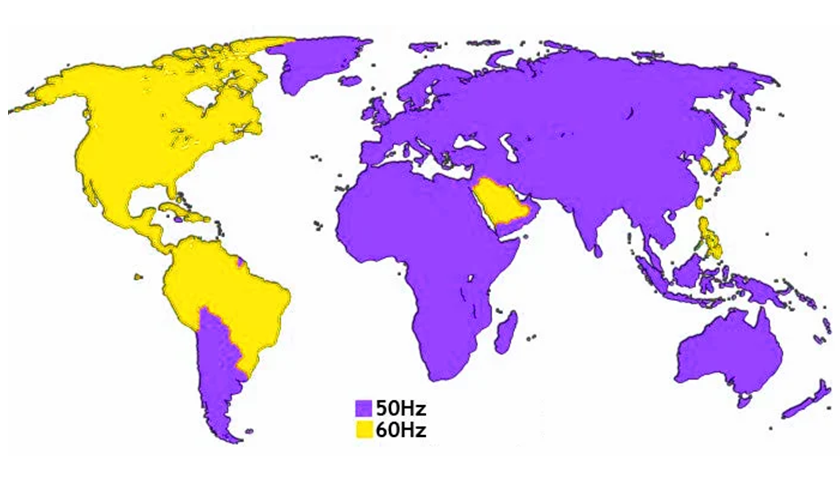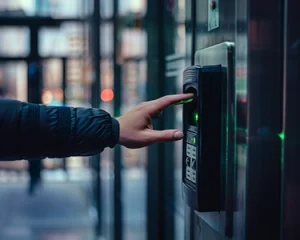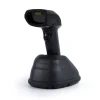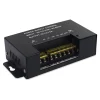Dashcams have become an indispensable tool for many drivers around the world, providing valuable footage in emergency situations and beyond. One technical aspect that might not be immediately obvious to the average user, but is crucial for the quality of the recordings, is the frequency at which the camera records images. Is it better to choose 50 Hz or 60 Hz? The answer to this question isn't straightforward, and in this post, we will take a closer look at this issue to help you make an informed choice.
In this article, we will discuss:
- How it all began: a few words about electricity
- What is frequency in a dashcam and what does it control
- Which frequency to choose: 50 or 60 Hz
How it all began: a few words about electricity
Before fully utilizing their dashcams, most owners meticulously check the settings and features of their newly purchased devices. While navigating through the menu, every device allows users to choose between two frequency values – 50 and 60 Hz. In this post, we will shed some light on this function and explain why more doesn’t always mean better.
Before answering the question of which frequency is appropriate, we need to delve into a medium without which functioning in today’s world is almost impossible. We are talking, of course, about electricity – the current as we know it today started to be used more broadly with the invention of the first light bulb at the end of the 19th century. Despite the very dynamic spread of this invention, there were still many villages in Poland in the mid-20th century that had not been electrified.

Currently, in Europe, the Continental European Power System is responsible for electricity delivery, which is the largest synchronized system for transmitting electrical energy in the world. This system comprises electric networks from 25 countries, including Poland. And here we come to the crucial point – the entire system generates electricity at a voltage of 230V and a frequency of 50 Hz. This is a constant frequency used by many electrical devices, including for clock synchronization. In early 2018, due to electricity production issues in Southern Europe, the overall frequency dropped to 49.996 Hz. This seemingly minor difference resulted in clocks powered by the network in all 25 countries connected to the Continental European Power System running 6 minutes late.

What is frequency in a dashcam and what is its responsibility?
The frequency of light in a car dashcam refers to how the camera interprets and records artificial light sources, such as street lights, car interior lights, or the lights of other vehicles. The key factor here is the frequency at which these light sources flicker, which is associated with the frequency of the power grid in a given region. Flicker Phenomenon – many people are unaware that many artificial light sources actually “flicker”. Although this flickering is usually so fast that the human eye cannot perceive it, cameras can capture it. This effect may appear as pulsating bands or stripes in the video.
The extent of flickering is associated with the frequency of the power grid. In Europe, the power grid operates at a frequency of 50 Hz, causing lights to flicker 100 times per second (50 times in one positive cycle and 50 times in a negative cycle). In countries like the United States, the grid operates at a frequency of 60 Hz, leading to flickering occurring 120 times per second.
So, what does this mean for our dashcam? If the car camera isn’t correctly tuned to the flickering frequency of lights in a given region, it may record visual disturbances. Therefore, many dashcams have an option to choose between 50 Hz and 60 Hz to align with the local power grid and minimize flickering effects.

Which frequency to choose: 50 or 60 Hz?
Regardless of the region in Europe where we are located, and no matter where we are – in our homes, apartments, restaurants, or even outdoors – all electrical devices use the same current with a frequency of 50 Hz. That’s the frequency we should use for our dashcams. So why do dashcams have the option to select frequency? The 60 Hz setting is provided for use in countries where this frequency is standard, such as the United States, Canada, Brazil, etc. This option was introduced with these countries in mind.

So the question remains, what will happen if we set the frequency to 60 Hz on our dashcam in a region that uses 50 Hz? Apparently, nothing bad will happen, and the equipment won’t be damaged. However, it’s possible, especially in night recordings, that the lights from street lamps, traffic signals, etc., will appear to flicker. To eliminate this effect, you should set the frequency on the camera to match the frequency of the electrical power used in that country.
Did you know...
- The first dashcams were primarily used by law enforcement agencies in the United States in the 1980s. They were meant to assist in documenting the actions of suspects during traffic stops.
- One of the first cities in the world to have full electric lighting was Wabash, in t he state of Indiana, in 1880.
- The flickering of light due to alternating current was one of Thomas Edison’s arguments against alternating current during the so-called "current wars". Edison tried to demonstrate the dangers of alternating current, although the flickering of light itself was not harmful.
- Many people are unaware that although most household electrical devices operate on current with a frequency of 50 Hz or 60 Hz, many of them contain internal converters that alter this frequency to meet the specific needs of the particular device.
Summary
Dashcams are becoming increasingly popular for various reasons, which translate into benefits for drivers. Imagine a situation where you get involved in a collision or accident – with a dashcam, you have irrefutable evidence of what really happened. This tool becomes invaluable, especially in the face of false claims or road fraudsters who deliberately cause accidents.
In the age of modern technology, it’s worth investing in tools that enhance our safety and driving comfort. Dashcams are not only a guarantee of evidence in case of unforeseen situations but also an opportunity to capture beautiful moments and picturesque landscapes while driving. We encourage you to purchase – it’s an investment that will surely pay off!
![High-level security and control – Access Control Systems [2024]](https://hdwrglobal.b-cdn.net/wp-content/uploads/2024/05/transparent-thegem-product-justified-landscape-s.png)













